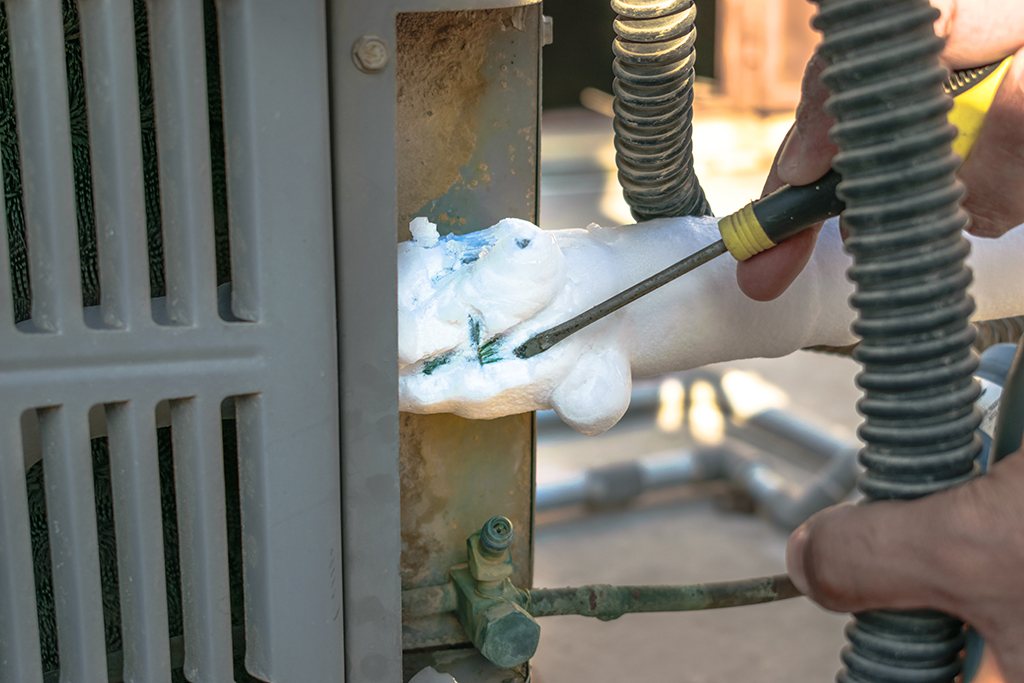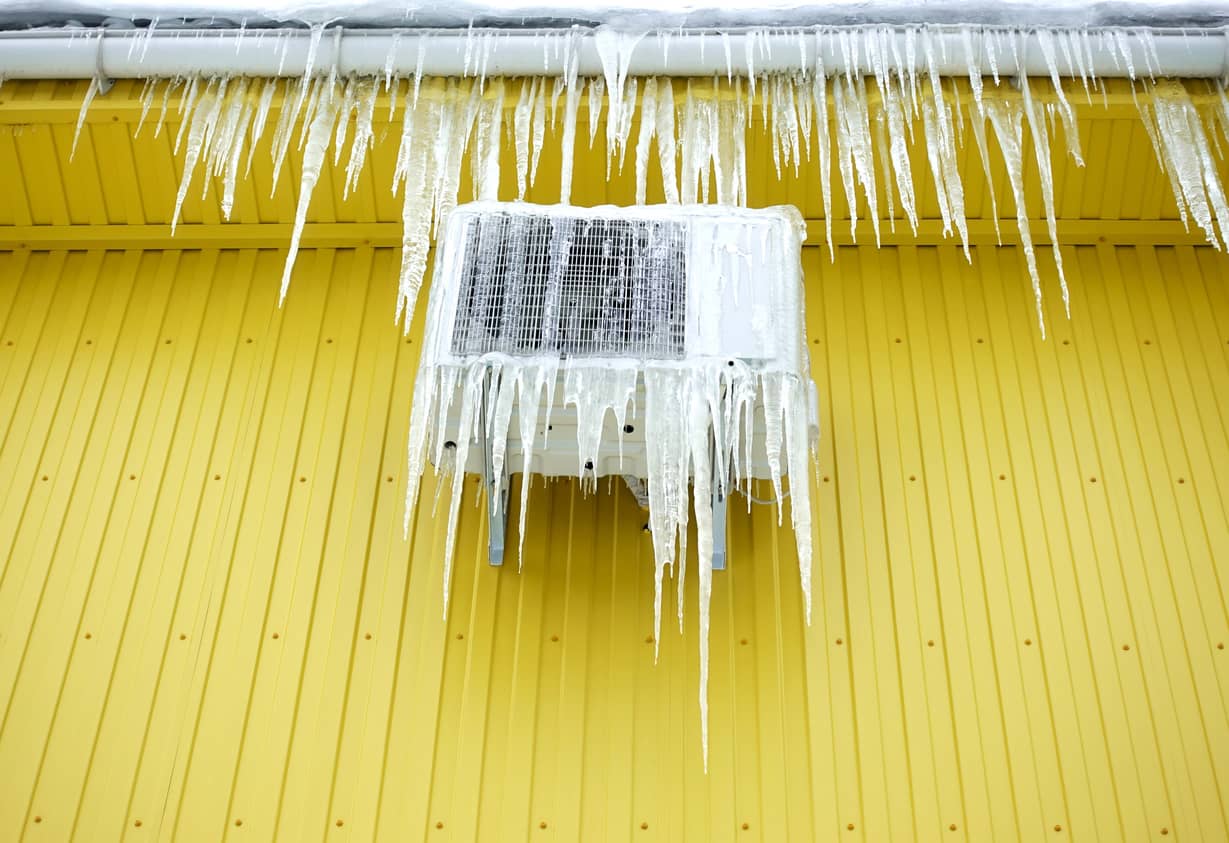Dealing with a Frozen AC Pipe: Complete Guide
Dealing with a Frozen AC Pipe: Complete Guide
Blog Article
Have you been trying to find help and advice around What Do I Do If My AC Pipe Is Frozen?

Introduction
Uncovering that your air conditioner pipeline is frozen can be worrying, especially throughout hot summer months when you depend on your air conditioner the most. Recognizing what to do in such a circumstance is crucial to stop further damage to your cooling system and guarantee your comfort inside your home.
Recognizing the Causes
Several aspects can add to the cold of an air conditioning pipe. Comprehending these reasons can assist you resolve the issue efficiently.
Lack of Airflow
One typical root cause of an icy AC pipe is inadequate airflow. When the airflow over the evaporator coil is restricted, it can create the coil to go down below freezing temperature level, bring about ice development on the pipeline.
Reduced Refrigerant Levels
Inadequate refrigerant levels in your AC system can additionally lead to an icy pipeline. Low refrigerant levels can trigger the stress in the system to drop, causing the cold of wetness on the evaporator coil.
Winter Conditions
In chillier climates, freezing temperatures outside can contribute to the freezing of AC pipes. If your AC device is not effectively shielded or if there are leakages in the ductwork, chilly air can infiltrate the system, triggering the pipe to ice up.
Dirty Air Filters
Filthy or blocked air filters can restrict air movement in your a/c system, resulting in different problems, consisting of a frozen pipe. It's important to change or cleanse your air filterings system consistently to make sure appropriate air movement and stop ice buildup.
Indicators of a Frozen AC Pipe
Identifying the signs of an icy AC pipe is crucial for timely activity.
Reduced Airflow
If you observe a substantial decrease in airflow from your vents, it could suggest an icy pipeline.
Ice Buildup on the Pipe
Visible ice accumulation on the cooling agent line or the evaporator coil is a clear sign of an icy AC pipe.
Unusual Sounds from the Unit
Uncommon audios, such as hissing or gurgling, originating from your AC unit can signal that there's ice present on the pipe.
Immediate Actions to Take
When faced with a frozen AC pipeline, it's necessary to act rapidly to prevent further damage to your air conditioning system.
Switching off the a/c
The primary step is to shut off your ac unit to stop the system from running and worsening the problem.
Checking for Blockages
Inspect the area around the indoor device for any type of obstructions that might be blocking air movement, such as furniture or curtains.
Defrosting the Pipe
You can utilize mild techniques like positioning towels soaked in cozy water around the frozen pipeline to help thaw it gradually.
Preventive Measures
Taking preventive measures can aid prevent future occurrences of a frozen air conditioning pipe.
Routine Maintenance Checks
Schedule regular maintenance contact a specialist HVAC technician to ensure that your AC system is running efficiently.
Changing Air Filters
On a regular basis change or clean your air filters to prevent airflow constraints and preserve ideal performance.
Shielding Exposed Pipes
If your a/c pipes are subjected to cold temperature levels, think about insulating them to stop freezing throughout winter months.
Looking For Professional Help
If DIY techniques fail to settle the problem or if you're unclear regarding just how to proceed, it's finest to look for support from a qualified HVAC professional.
When DIY Methods Fail
If your efforts to thaw the pipeline or address other concerns are not successful, it's time to contact a professional.
Relevance of Hiring a Professional HVAC Technician
A licensed HVAC technician has the experience and devices required to detect and fix problems with your air conditioner system safely and effectively.
Conclusion
Taking care of an icy AC pipe can be a frustrating experience, however recognizing how to respond can aid minimize damage and bring back convenience to your home. By recognizing the causes, acknowledging the indicators, and taking punctual action, you can effectively deal with the problem and stop future events.
What to Do If Your AC Line Is Frozen
Make Sure All Supply and Return Air Vents Are Open
If you notice problems with airflow, the first thing you should do is check your supply and return vents. Supply vents distribute clean, conditioned air throughout your home. As this air becomes stale, it’s pulled into the return vent, where it’s reconditioned before being sent back out through the supply vent.
When these vents are closed, air won’t flow in the home. Before examining your AC, check the vents in every room and ensure they’re all open.
Check for a Dirty Air Filter
Another possible cause of limited airflow is a dirty air filter. Your air conditioner’s filters catch elements you don’t want to breathe in, such as dirt and dust. Over time, filters can become clogged, ultimately blocking air from flowing in and out. The lack of airflow can then cause the entire coil to freeze and will completely restrict any air from moving through it. The AC may need to be powered off for one to two days to allow the coil to thaw after replacing the filter to allow proper functioning of the unit. This debris can also accumulate on your AC’s evaporator coil, requiring a more serious repair. In general, air filters should be cleaned regularly (about every two weeks).
Assess Your Outdoor Unit
In addition to checking your AC, assessing the outdoor unit is a good idea. Also known as the condensing unit, it works with your interior unit to release heat outside. An issue with the outdoor unit can result in rising internal temperatures.
Overgrown Shrubs or Clogged Leaves
From leaves and twigs to shrubs and debris, there’s no shortage of outdoor elements that can accumulate around your condensing unit. When these elements get lodged inside the unit, they can block airflow. Fortunately, removing the blockage can solve the problem.
Sounds of a Broken Fan
Shrubs and leaves aren’t the only things that can impede your outdoor unit’s airflow. If the fan is broken, the unit won’t be able to properly get rid of heat — which means the internal temperature won’t go down. First, make sure the fan is spinning. If it is, check for the following sounds of a broken fan:
Buzzing Rattling Screeching Hissing Clicking Preventative Measures
Nobody wants to deal with a frozen AC line. In addition to causing problems with your air conditioner, they require professional repairs. On the bright side, there are preventative measures you can take to help ensure this issue doesn’t arise in the first place.
https://www.coopergreenteam.com/blog/what-to-do-if-ac-line-frozen

As a passionate person who reads on Why Is Ice On My Outside Air Conditione, I assumed sharing that excerpt was important. Are you aware of another individual who is fascinated about the topic? Please feel free to share it. Thank you so much for your time spent reading it.
Estimating Report this page